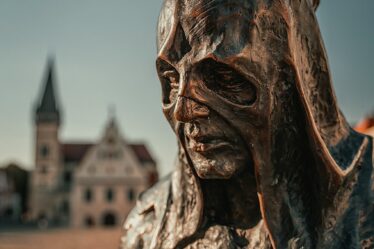

Frescoes of Santa Maria Nuova — a story that few notice today, yet one that hides a fascinating chapter of Florentine art history. In the quiet portico of Florence’s oldest hospital, masterpieces once stood that spoke of faith, irony, and style.
The Forgotten Frescoes of Santa Maria Nuova Hospital
In the loggia of the Hospital of Santa Maria Nuova, where visitors now pass distractedly, six painted lunettes once depicted “Scenes from the Life of Christ.” Between 1613 and 1615, these frescoes were created by Antonio Circignani, better known as Il Pomarancio. He worked with his students under the commission of the hospital’s devoted administrator, Barnaba degli Oddi — a man clearly unafraid of the public’s sharp tongue.
Today, Frescoes of Santa Maria Nuova remain only as five surviving works. Four are signed by Pomarancio himself, while one — The Annunciation — is attributed to the more famous Federico Zuccari. As some wryly observed, “they added a prestigious name, just in case.”
👉 Learn more about Antonio Circignani (Il Pomarancio)
👉 Discover Santa Maria Nuova Hospital’s history
A Harsh Judgment from the Florentines
However, the Florentine people — ever masters of irony — were not impressed. Upon seeing these new frescoes, they quickly coined a biting remark:
“The sick are inside the hospital, but the cripples have been left under the portico!”
This sarcastic quip, passed from mouth to mouth, captured both the humor and aesthetic judgment of Renaissance Florence. It was, in essence, a diagnosis of bad taste: too much mannerism, too much pose, and perhaps, too little heart.
The Frescoes of Santa Maria Nuova thus became not only a piece of art history but also a symbol of the eternal tension between artistic ambition and public perception.
👉 Explore Florentine Mannerism
👉 Visit Florence’s historic hospitals and churches
From Devotion to Decoration
When the frescoes were later detached and remounted on masonite panels, they took on the look of living room paintings — a transformation that stripped them of their sacred context. What once surrounded the suffering and prayers of hospital patients became mere wall decorations, removed from their emotional setting.
Yet, this very journey — from sacred space to art object — gives at this Frescoes a second life: they remind us how art, even when displaced, continues to tell stories of faith, vanity, and civic humor.
Art, Faith, and Florence’s Irony
In the end, the story of these Frescoes of Santa Maria Nuova reveals more than artistic technique — it reflects the Florentine soul itself: sharp, ironic, and profoundly human. Between devotion and mockery, these paintings became a mirror of their time.
Too much mannerism, too much pose — and perhaps, too little heart. But then again, that’s another story.



